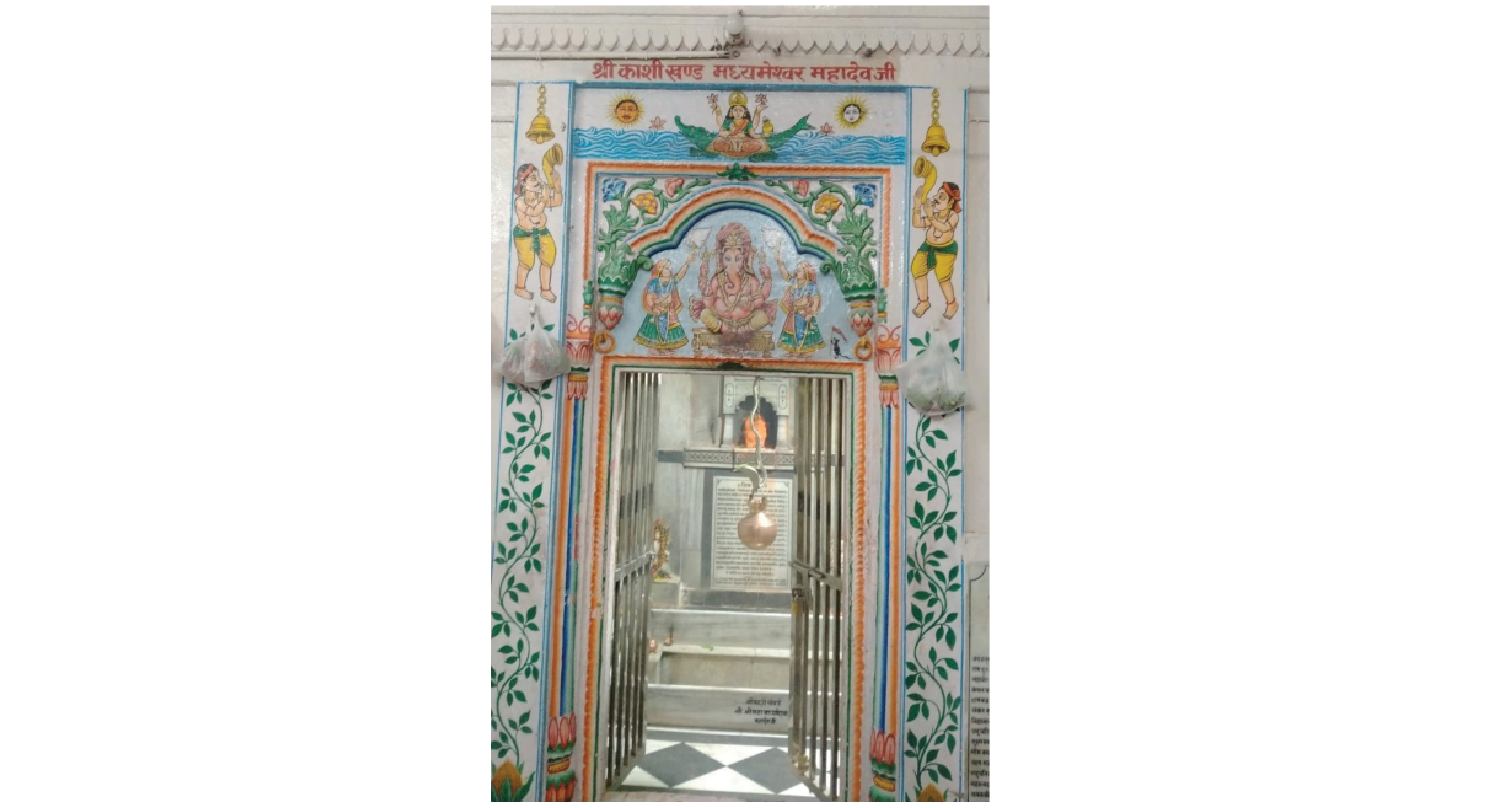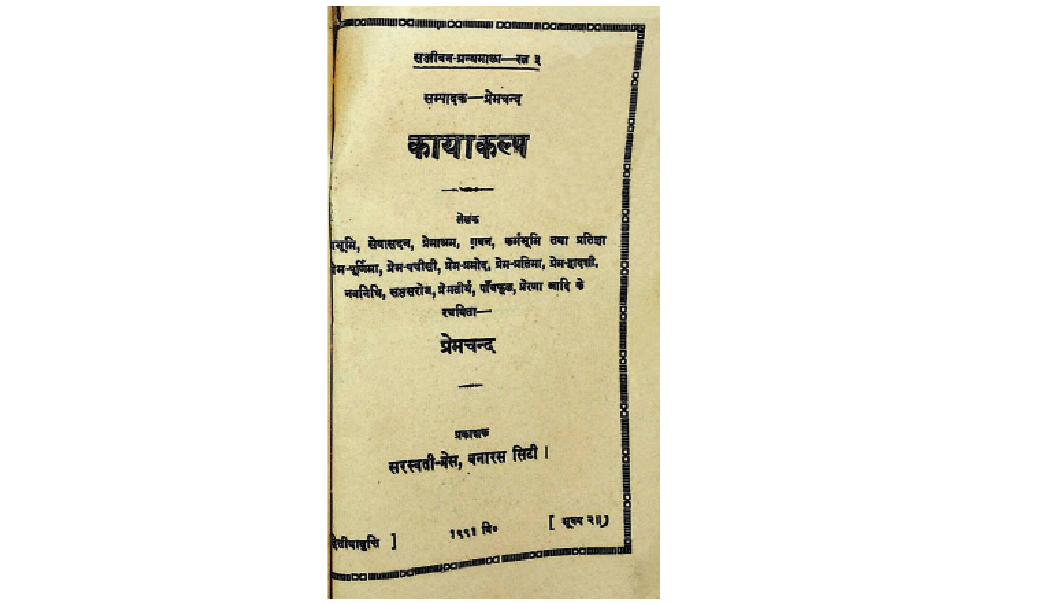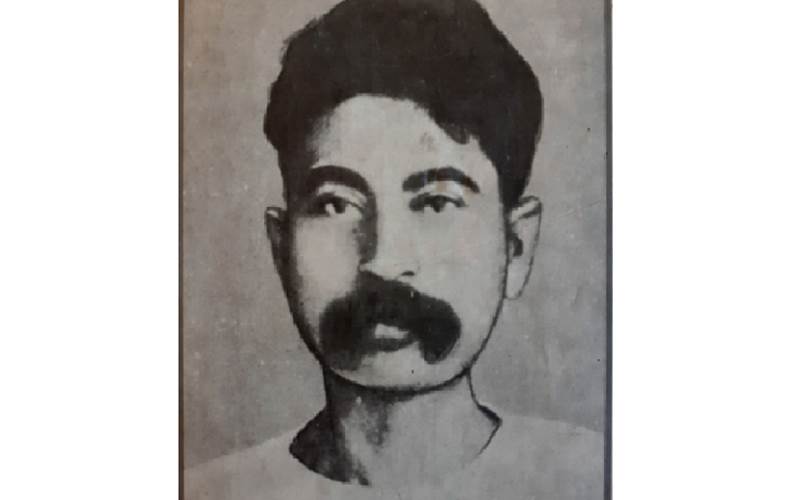Print History: The biggest mistake of my life - Munshi Premchand and Saraswati Press, Benares
The demarcations between writer, printer and publisher were often blurred in the literary world of Indian languages in the twentieth century. Premchand’s experience of starting a printing press in the 1920s illustrates how difficult it was to manage multiple roles
31 Dec 2022 | By Murali Ranganathan
By the early 1920s, Dhanpatrai Srivastava (1880–1936), better known as Munshi Premchand, was at the peak of his writing career and recognized as one of the leading literary figures of India. Straddling the twinned-yet-different worlds of Urdu and Hindi, Premchand’s prodigious output of novels and short stories in the previous two decades mirrored the realities of contemporary India as it struggled, often violently, to not only negotiate new power structures with an increasingly recalcitrant colonial government but also recognize and remodel the inequities of its societal landscape. Though employed by the Education Department of the United Provinces (modern Uttar Pradesh), Premchand led a busy literary life. He managed to secure equitable, if not lucrative, deals with the publishers of his Hindi and Urdu novels. His short stories commanded a premium from a hyperactive and competitive world of magazines and literary journals.
Not only did he contribute stories and other writings to the Urdu monthly Zamana (Kanpur), he also wrote for Makhzan and Humayun (both published from Lahore). Hindi magazines like Maryada (brought out by Gyan Mandal, Kashi), Madhuri (published by Naval Kishore Press, Lucknow)and Swadesh (Gorakhpur) competed for his stories. These stories were soon collated and published as books. His book royalties were supplemented by translation assignments and contracts to write textbooks. Premchand was one of the few Hindi/Urdu writers who could earn a livelihood through his literary output.
Contrastingly, most other writers in Indian languages felt short-changed by their publishers. Payments, generally minuscule amounts, were delayed beyond reason; sales figures could not be verified; and, publication contracts were not easily enforceable. Novels and short stories would be translated into other languages without permission or payment for translation rights. This sense of helplessness drove many of the leading writers to start their own publishing house with an inhouse printed press.
For example, Radheshyam Kathavachak (1890–1963), the Parsi Theatre playwright and performer, set up Radheshyam Pustakalaya in Bareilly to print and publish his own writings. In 1942, R K Narayan (1906–2001), India’s leading English novelist, whose books had hitherto been released by British publishing houses, started Indian
Thought Publications to publish his novels, an arrangement which he continued for the rest of his life. Further afield, in 1917, the novelist Virginia Woolf, in association with her husband Leonard, acquired a letterpress to start the Hogarth Press in suburban London as an independent publishing house.
A press of one’s own
The year 1921 was a turning point in Premchand’s life in more ways than one. Gandhi’s dominance of the political narrative influenced him greatly. After hearing him speak in Gorakhpur, Premchand, after much thought, resigned his government service. He intended to devote the rest of his life to serving the nation, not by joining any political movement, but through his literary works. He had convinced himself that, unless he owned a publishing house and a printing press, he would not be able to support himself as a writer.
While he finalised plans for his press, Premchand sought other assignments to ensure his livelihood. At Gorakhpur, under the spell of the swadeshi movement, he set up a handloom textile unit. Moving to Benares, he considered becoming the secretary of the local municipal committee. But soon, he moved to Kanpur as headmaster of Marwadi Vidyalaya. A few months later, he was back in Benares and officiated as the editor of Maryada. In July 1922, he became the principal of the school section of Kashi Vidyapith. Amidst all these peregrinations, Premchand continued to write at a hectic pace: novels in Urdu which were later reworked into Hindi, short stories in Urdu and Hindi, and four articles a month for a newspaper.
However, from 1921, Premchand was obsessed with the idea of having his own printing press. The printing press would provide a regular income through job printing. It would also print and publish his novels and short story collections. Gorakhpur, Benares and Kanpur were possible locations. Benares was an obvious choice as it was close to Lamhi, his native village, where he was building a large house for his extended family. At Gorakhpur, besides running the press, he could possibly conduct an Urdu newspaper. But at Kanpur, he could work closely with his literary partner and close friend, Munshi Daya Narain Nigam (1882–1942). Premchand was a regular contributor to Zamana, the leading Urdu monthly of that period, which was edited by Nigam. Irrespective of the location, Premchand would lead the literary life to the full, subsisting on his literary income augmented by profits from the press.
The early history of the press can be traced in the Urdu letters that Premchand wrote to Nigam. It is also scattered across the narrative of Kalam ka sipahi, Premchand’s biography written by his son Amritrai. On 24 June 1922, Premchand wrote to Nigam from Benares:
I have positively made up my mind to start my own printing press. Types and wooden paraphernalia are available here for two thousand rupees. I have still not got my hands on them but am confident of doing so. I need a treadle machine and a printing press. I have heard both these items are on sale at Allahabad. I am going to Allahabad on Monday. If I can get them, my printing press will be ready and I can soon start my work. …
I will need to make an investment of five thousand rupees in the press. Another thousand rupees will be required to get it running. I have already arranged for four thousand rupees. My cousin from Indore has promised a thousand. I am still trying to raise at least a thousand rupees more. If I had realised that I would have to set up a printing press so soon, I would never have taken up the house-building project. By the time the press is functional, I will not have a cowrie in my account. I have gambled my everything on this project. Let me see how it fares.
Premchand encountered the inevitable roadblocks soon after. Writing on 14 July, he complains to Nigam: “The press has been a lot of trouble. I went to Allahabad last Sunday and saw two machines. One of them was good but priced at three thousand rupees. I was advised not to buy it at this price. After I returned to Benares, I learnt that there is an entire printing press up for sale here. It has two printing presses and other print paraphernalia. I am negotiating with them. Let’s see how it goes.” By October 1922, Premchand had realised that it might not be prudent to buy second-hand presses and Devanagari types from the local market.
New types were ordered from Calcutta. Two printing machines were ordered from Woodroff & Co, a London-based manufacturer. They were expected to reach Benares in December 1922. But when the machines did not arrive even in February 1923, Premchand’s spirits began to flag. The publisher of his Hindi novels, Hindi Pustak Agency, was based in Calcutta and Premchand used their services to ensure that the press and types arrived in Benares. Finally, on 22 April 1923, he had good news to share with Nigam:
Greetings! This is perhaps my last letter to you from this address. I have finalised a building for the press today. The machines have arrived, and the types, blocks and wooden cases have also reached. I am hopeful that the press will be completely operational in May. I still have to file the declaration for the press, which I will do on Monday. I have still have not finalised a name for the press. Some of the names under consideration include Sahitya Press, Saraswati Press and Sansar Press. Why don’t you suggest a name? You have a special talent for choosing names. …
I also intend to procure a lithographic press. Is there a litho press for sale in Kanpur? Please inform me if there is one. The general impression here is that a litho press will not get any work in Benares but I want to give it a try. Hand presses are now out-of-date in Kanpur and, perhaps, are cheaply available.
On Nigam’s suggestion, the press was named Saraswati Press. It had four investors: Premchand himself, his brother Mahtab Rai, another cousin Baldev Lal, and Raghupati Sahay, a close friend whom he first met in Gorakhpur. Much later, Sahay became famous as the Urdu poet Firaq Gorakhpuri. While Premchand contributed about forty percent of the capital and initial expenses, the other three pitched in with twenty percent each. Both Baldev Lal and Raghupati Sahay were merely investors. Most of the work involved in setting up the press—locating a site for the press, selecting and ordering machines, and choosing types and cases—was done by Premchand. Mahtab Rai was the manager of the printing press owned by Gyan Mandal. He resigned that job in June 1923 to take over the running of the Saraswati Press.

Saraswati Press was located near Madhyameshwar Temple, Kashi
Becoming a printer
The Saraswati Press was located at Madhyameshwar, perhaps the centre of Kashi in pre-historic times and now the site of an eponymous temple. After a long period of hunting and negotiation, Premchand could identify a building which had earlier housed the Dayanand Anglo-Vedic school. Premchand was delighted with the location of the press: “My press is housed in a spacious building. Not too far from the city, but at such a distance and situation that there could hardly be a better location in Benares. Right opposite the Town Hall and next to the Company Garden. You just have to open the doors to enjoy the pleasures of the park.”
Finally, on 20 July 1923, nearly a year after Premchand set the ball rolling, the press was ready to begin operations. The chases required to hold the set type were the last pieces of equipment to arrive in the press. Premchand had officially become a printer.
However, Premchand was still wanting a lithographic press. While types were used to print Devanagari text, Urdu was still printed using the lithographic process as the quality of types available in the Perso-Arabic font was still not satisfactory. Writing to Nigam on 14 August 1923, he reminds him of his letter of 22nd April.

Title-page of Kayakalp, a Premchand novel published by Saraswati Press, Benares
I have now decided to print my Urdu books myself. I will need a small lithographic press. You mentioned that you were planning to get rid of one of yours. What kind of press is it? What is its size? Is it operational? Are all its parts functional? Will it also have a lithographic stone? Does it print four pages of Zamana at one go? Or eight? Please address all these issues as soon as you can. There is no point in delaying it any longer.
The investment in the press had already increased from the estimated 6,000 rupees to 8,000 rupees. There was no money to spare for working capital and further capital had to be raised. Besides the lithographic press, a paper cutting machine was ordered from Madras for five hundred rupees. Finally, the investment was pegged at 10,500 rupees.
Premchand had many plans for a publishing programme at Saraswati Press: “I want to start a series in Hindi titled Sansar Darshan modelled on the lines of Peeps at Many Lands. There is nothing like it in Hindi and there is surely a market for such books. I have also arranged with Hindi Pustak Agency to lift the entire print run of my books at a commission of forty percent.” Elsewhere he notes that, “I could produce a book in the series every other month. It will be priced at ten annas and I will get four hundred rupees per book. This will cover all the expenses of the press.”
In the meanwhile, Premchand had hardly been idle on the writing front. Taking stock in April 1923, he notes that, “I have many books ready for publication. Prem Pachisi is out of print. Gosha-e aafiyat is still incomplete only because it doesn’t have a publisher. I also want to publish an Urdu version of my latest drama Sangram. By the time these books are published, my new novel should be complete. About ten to twelve stories are also ready. … I also want to write a short article on the ‘purification’ of Malkana Rajputs. I am completely against this movement.” He hoped that many of his new writings would also be printed at the press.

Epilogue
In spite of the spirited efforts of the partners, the Saraswati Press could never generate enough printing business to justify its investments. For the first two years, the press was managed by Mahtab Rai who received a salary. Premchand then took over the management for two years while Baldev Lal pitched in for a year. In August 1928, a professional manager with experience in the print industry, Pravasilal Varma Malviya, was appointed to handle the affairs of the press. Not only did he receive a salary, he also had a third share in the profits of the press. The competition for commercial print jobs in Benares was so high that Saraswati Press could never get enough business to cover its expenses. The other partners were constantly suggesting that the press be sold or liquidated so that they could recoup some of their investment.
Soon after the press became functional, Premchand took on other assignments to augment his income. He moved to Lucknow for two years to work as the co-editor of Madhuri, a popular Hindi monthly magazine published by Naval Kishore Press. He also wrote many of his most successful novels such as Rangbhoomi (1924) and Kayakalp (1926) during this decade. He could never stick to his original plan of printing and publishing his own works and constantly relied on other publishers. For this and many other reasons, the press was doomed to fail.
Writing to another friend in 1934, just two years before his death, Premchand pours his heart out about his travails with the press: “This press is the root cause of all of my problems. Its foundation must have been laid at an inauspicious hour. Ten thousand rupees, eleven years of labour, and struggles beyond count. I alienated numerous friends and broke many promises because of this press, and wasted valuable time checking proofs when I could have been reading or writing. It is the biggest mistake of my life.”
References
- Amritrai, Premchand: Kalam ka sipahi (Allahabad: Hans Prakashan, 1962)
- Premchand, Chitthi Patri, edited by Amritrai and Madan Gopal (Allahabad: Hans Prakashan, 1962)
- Manaktala, G K, Premchand: Hayat-e nau (New Delhi: Modern Publishing House, 1993)












 See All
See All